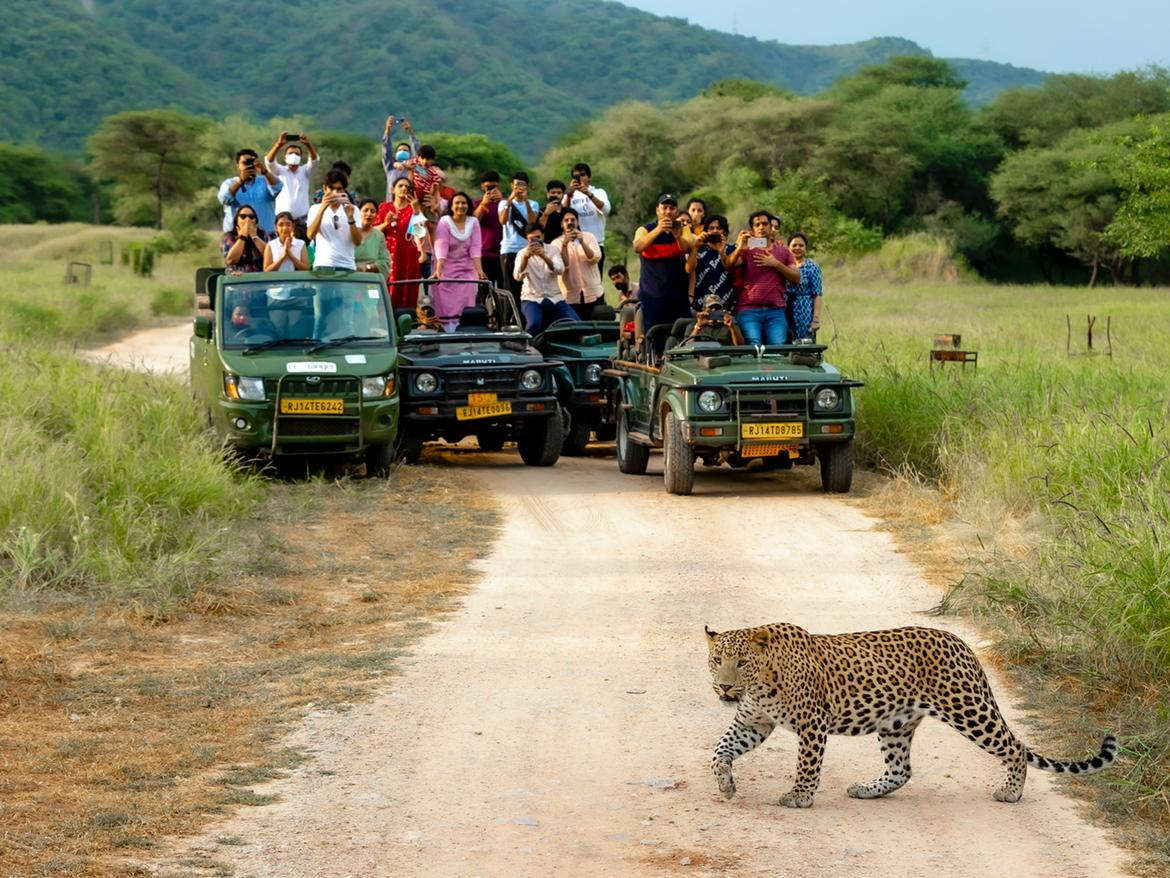Spots in the Shadows: The Wild Secrets of Jhalana Leopard Safari


Tucked away in the bustling cityscape of Jaipur lies a lesser-known marvel of Indian wildlife—the Jhalana Leopard Safari. While Rajasthan is often associated with palatial forts and desert dunes, this protected forest reserve offers a completely different flavor: untamed, mysterious, and pulsating with life. For wildlife enthusiasts and curious travelers alike, Jhalana offers an intimate glimpse into the lives of leopards and other elusive species that roam its dry deciduous forests.
The Enigma of Jhalana: A Wildlife Sanctuary Amidst a City
Located barely 10 kilometers from Jaipur’s city center, the Jhalana Leopard Safari Park spans approximately 23 square kilometers. It might not compare in size to India’s sprawling national parks, but what it lacks in area, it makes up for in density, particularly of leopards. Home to over 30 leopards, including resident females and their cubs, Jhalana boasts one of the highest leopard densities in the country.
What makes this sanctuary even more remarkable is its proximity to an urban setting. Often called the "Urban Leopard Reserve," Jhalana is a pioneering example of coexistence, where wildlife thrives on the edge of a growing city.
Leopard Territory: Stealthy, Solitary, and Sovereign
Leopards are notoriously elusive, but in Jhalana, sightings are frequent and often awe-inspiring. These big cats, known for their solitary nature and stealthy movement, rule the forest without the presence of apex predators like tigers. This makes them more confident in their movements, increasing the chances of spotting them during safaris.
While early morning and late afternoon safaris offer the best visibility, leopard behavior here can be unpredictable yet thrilling. Visitors often report seeing them resting in the shade, crossing trails, or lounging on rocks with regal nonchalance. It's this unpredictability that makes each safari a new adventure.
Beyond the Leopards: A Rich Biodiversity
Although leopards are the prime attraction, Jhalana is far more than just a leopard park. It supports a diverse ecosystem that includes:
Indian striped hyenas, nocturnal scavengers rarely seen in other parks
Desert foxes and jackals, which maintain the park’s ecological balance
Over 150 bird species, making it a paradise for birdwatchers—look out for the Indian pitta, dusky eagle owl, and shikra
Reptiles such as monitor lizards and Indian cobras that thrive in the rocky outcrops and scrub forests
The flora is equally intriguing, dominated by dhok trees, acacias, and scrub vegetation typical of arid zones. The terrain—marked by ridges, dry riverbeds, and shallow valleys—adds to the visual drama of a safari.
Safari Experience: What to Expect
The safari experience at Jhalana is well-structured and managed by the Rajasthan Forest Department. Visitors can choose between morning (6:45 AM to 9:15 AM) and afternoon (3:45 PM to 6:15 PM) drives. Each safari typically lasts around 2.5 hours and is conducted in 4x4 open gypsy vehicles with trained guides.
Key safari tips:
Book in advance, especially during peak season (October to March), as slots are limited.
Carry binoculars and cameras, but avoid flash photography—it can startle wildlife.
Wear muted colors and keep noise to a minimum to increase your chance of close encounters.
Conservation Efforts and Responsible Tourism
Jhalana's success story isn't just about tourism; it's also about conservation. Once a hunting ground for Jaipur’s royals, the area has been transformed through sustainable management and community involvement. Local awareness programs and eco-tourism initiatives have played a crucial role in protecting this urban wilderness.
To ensure the preservation of this fragile habitat, visitors are encouraged to follow eco-friendly practices:
Avoid littering or disturbing wildlife
Follow the guide’s instructions strictly
Support local conservation efforts through donations or volunteering
Best Time to Visit
The park remains open throughout the year, but the cooler months from October to March are considered ideal due to pleasant weather and clearer visibility. Summer (April to June), though hotter, can be surprisingly rewarding, as animals venture out to water sources, increasing the chances of sightings.
Getting There
Jhalana Leopard Reserve is conveniently accessible:
By Air: Jaipur International Airport is just 7 km away
By Rail: Jaipur Junction, well-connected to major Indian cities, is around 10 km from the reserve
By Road: Private taxis and local cabs offer easy access from anywhere within Jaipur
Final Thoughts: A Wilderness Worth Preserving
Jhalana Leopard Safari offers a rare and intimate experience—one where nature thrives in the shadows of urban life. It’s not just about spotting a big cat; it’s about entering their world, where silence speaks volumes and every rustle could signal a predator’s approach.
For those willing to look beyond Jaipur’s palaces and bazaars, Jhalana offers a hauntingly beautiful reminder: even in the shadows, the wild survives—and often, that’s where it shines the brightest.
Leave a comment